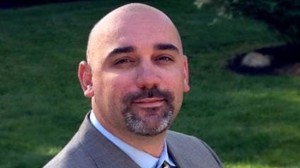 Below are some excerpts from a speech that Bob Rodriguez, the CEO of First Pacific Advisors gave at a recent CFA event.
Below are some excerpts from a speech that Bob Rodriguez, the CEO of First Pacific Advisors gave at a recent CFA event.
Rodriguez isn’t a household name like Warren Buffet, but he achieved one of the most successful mutual fund records in history. Rodriguez managed the FPA Capital fund from 1984 until 2009. During this period, FPA Capital outperformed various measures of stock market performance by 400 to 600 basis points and was the #1 diversified equity fund for that period. Rodriguez takes a more concentrated approach than is appropriate for many investors, but his insights on investing and the current investment landscape are an island of wisdom in a sea of reckless speculation. Emphasis is mine. Enjoy.
What I have learned in my career is that there is far more to becoming a successful investor than just being superb at accounting, financial modeling and smart. If I were to go back and begin again, I would spend more time studying human psychology. Very few people know themselves and are self-critical. I recommend that you ask yourself the following questions:
How do you deal with stress and uncertainty?
Are you more comfortable working alone while making independent decisions or do you like to know what others are thinking and doing?
Have you dealt with adversity in your life and how did you handle it?
Have you ever wondered why so many smart people get it wrong in investing and why?
Do you have common sense and if so, how do you prove it?
On Economic Growth and the Financial Markets
What is more troubling is that there has been no real deleveraging in debt levels both here and abroad. Geneva Reports, in their recently released September study, noted that debt-to-GDP ratios worldwide are now at higher levels than what preceded the last financial crisis. Additionally, their data confirms that higher debt level ratios, particularly those above the 90% to 100% range, are resulting in lower economic growth outcomes. This is what some of us were forecasting back in 2009 and what was argued by Reinhart and Rogoff in their 2010 book on 800 years of financial folly.
The real beneficiaries of QE have been in the stock and bond markets. Chairman Bernanke’s strategy of inflating asset values, as a means of stimulating the underlying economy, has generally failed. Additionally, the Fed’s goal of a 2% inflation rate has also not been met. However, it has been successful in creating asset price inflation on Wall Street. Its zero rate policy has encouraged enhanced risk taking since the general consensus is that one cannot keep money invested at a near zero rate. This is a mistaken belief since the opportunity cost of holding liquidity is among the lowest ever, when compared to dividend yields averaging just over 2%.
The stock market has been a fabulous place to be, particularly the past two years. However, approximately 60% of the market’s total return for this period has been a function of PE expansion. Profit margins have only improved slightly while top line revenue growth for the S&P500 has averaged between 2.5% and 3%. In contrast, earnings’ per share growth, benefitting from aggressive corporate share buybacks, has been above 5%. I warn you that share buy backs should be viewed skeptically since corporations have a long history of implementing them at stock market peaks while they are then terminated at troughs. Are these the components of a sustainable stock market rise? I think not, when it is driven by monetary policy manipulation of financial markets in conjunction with corporate financial balance sheet engineering. However, this game goes on since the consensus believes there is no alternative to the risk-on trade because cash earns nothing.
As a dedicated contrarian, I anticipate that prospective stock market returns should average less than 5% and more likely closer to 3% for the foreseeable future. Again, the penalties for holding liquidity are not that substantial when compared to the risk and likelihood of principal loss. This brings to mind the observation that Ben Graham made of the 1929 stock market. Had one sold stocks in 1925, one would have missed the other half of the market’s rise; however, between 1929 and 1932, the decline was so severe that one would have to wait nearly 20 years to regain the index’s point loss. For those who stayed in to the market peak, it would take nearly 25 years to recoup the loss in Dow points. On a more current basis, the NASDAQ has not yet recovered to its 2000 peak of 5,043.
This has been a decidedly negative outlook but I let the data lead me to the conclusion. Despite this, how can you take advantage of it? With heightened pressures to be fully invested, I believe the utilization of liquidity as a proactive investment strategy is warranted. There will come a time when it will be wonderful to be investing again. My recommendation to you is the classic value saying–be cautious while others are greedy and be greedy when others are cautious. Market volatility is bound to increase materially so an elevated liquidity position will afford you the opportunity to be greedy when the time is right.



